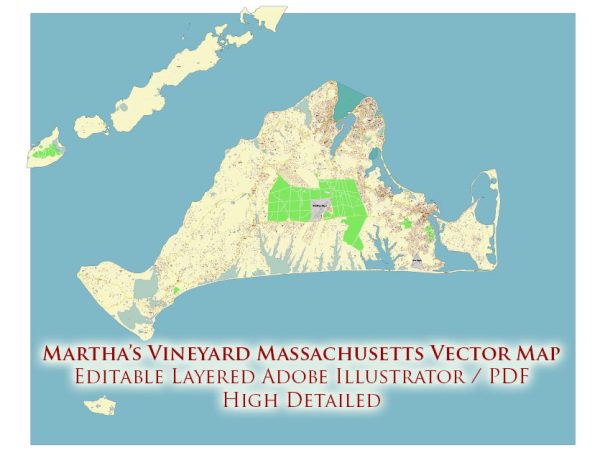Martha’s Vineyard, located off the coast of Massachusetts, is not typically characterized by traditional urban development. Instead, it is known for its picturesque landscapes, charming small towns, and a unique blend of history, culture, and natural beauty. The island has a rich history that has shaped its development over the centuries.
- Native American Presence: Before European settlement, Martha’s Vineyard was inhabited by the Wampanoag Native American tribe. They relied on fishing, hunting, and agriculture to sustain their communities.
- Colonial Era: European settlers, primarily English, arrived on Martha’s Vineyard in the 17th century. The island’s economy during this period was based on agriculture, fishing, and whaling. Small, self-sufficient farming communities emerged.
- Whaling and Maritime Influence: In the 18th and 19th centuries, Martha’s Vineyard played a significant role in the whaling industry. The island’s economy prospered due to its strategic location and the success of whaling voyages. The prosperity is reflected in the architecture of some of the historic homes in towns like Edgartown.
- 19th Century Development: During the 19th century, the island’s population grew, and small villages expanded. The construction of elegant homes, sea captain’s houses, and whaling-era structures contributed to the architectural heritage of Martha’s Vineyard.
- 20th Century Changes: The 20th century brought changes to Martha’s Vineyard with the rise of tourism. While the island maintained its rural charm, the influx of summer visitors led to the development of vacation homes and amenities. The island’s unique character attracted artists, writers, and celebrities.
- Environmental Conservation: In the latter half of the 20th century, there was a growing awareness of the need to preserve Martha’s Vineyard’s natural beauty. Efforts were made to protect the island’s landscapes and prevent overdevelopment. Various conservation organizations played a role in preserving open spaces and maintaining the island’s ecological balance.
- Contemporary Development Challenges: Martha’s Vineyard faces challenges associated with balancing development and conservation. Issues such as housing affordability, transportation, and sustainable development have been topics of discussion among residents, policymakers, and conservationists.
- Cultural Significance: Martha’s Vineyard has become a symbol of New England charm and has attracted a diverse population. The island’s communities are known for their close-knit feel, and events like the Martha’s Vineyard Film Festival and the Agricultural Fair contribute to the cultural vibrancy.
In summary, Martha’s Vineyard’s history of development is marked by its evolution from a primarily agricultural and maritime economy to a popular tourist destination with a focus on preserving its natural beauty and cultural heritage.


 Author: Kirill Shrayber, Ph.D.
Author: Kirill Shrayber, Ph.D.